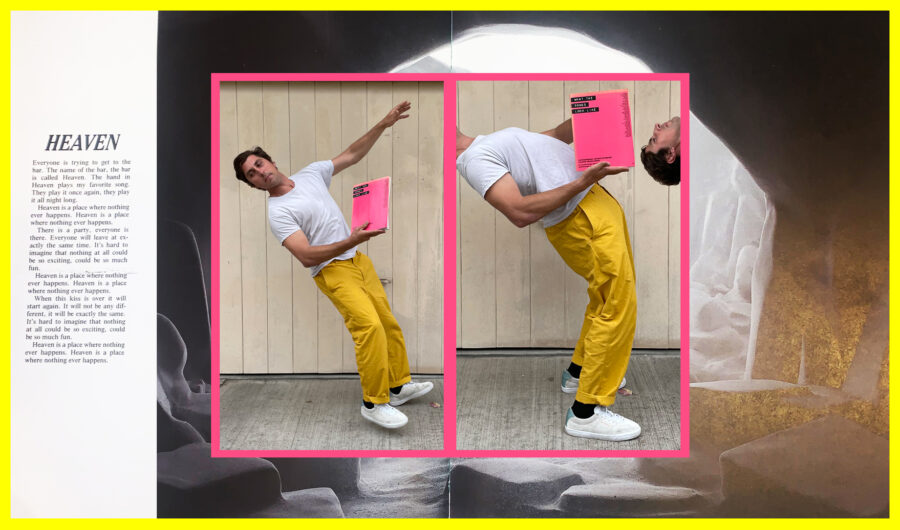Our ‘Offerings’ series continues with movie-buff, Tom Karangelov joining us to talk Michael Mann, David Byrne and the importance of atmosphere.
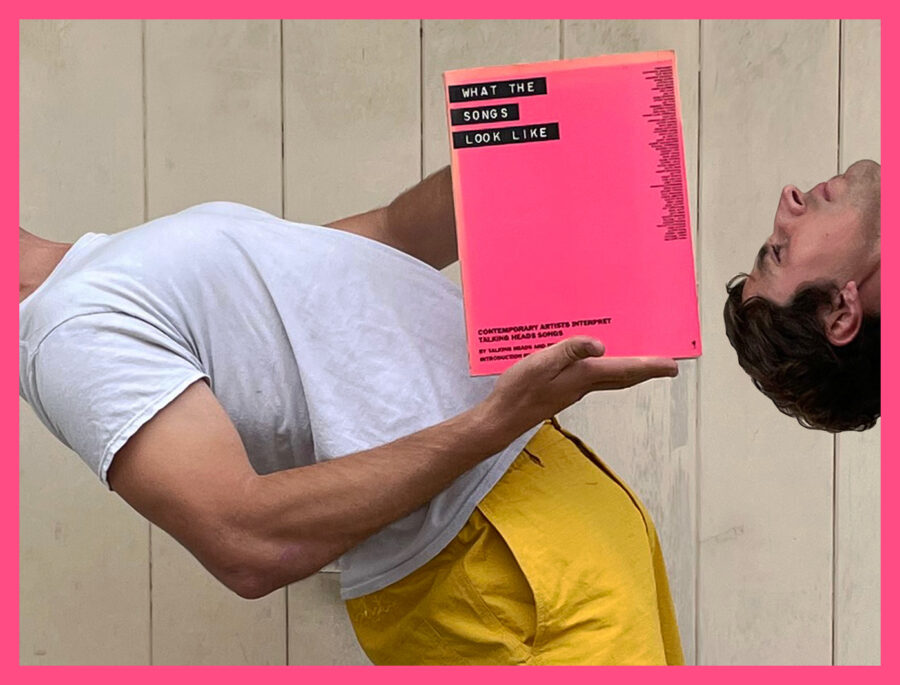
Interview by Farran Golding. Self portrait and collages courtesy of Tom Karangelov
I met Tom Karangelov about six years ago when he was filming for one of New Balance’s early projects, ‘Quids In’. Perched up in Manchester, the NB crew spent a week or so travelling around northern England, eventually landing in my neck of the woods. On that day, I remember hearing stories that Tom – heavily into Joy Division and New Order at the time – had been waking up early to visit various Factory Records landmarks before heading out skating.
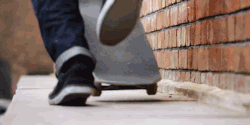 Halfway through ‘Quids In’, Tom wallride nollies a red brick building, over a bin, into a bank, dodging a couple of bollards on the ride-out. At first glance, there’s nothing discerning about this scene but the building’s facade actually belongs to an apartment block built upon the remains of The Hacienda.
Halfway through ‘Quids In’, Tom wallride nollies a red brick building, over a bin, into a bank, dodging a couple of bollards on the ride-out. At first glance, there’s nothing discerning about this scene but the building’s facade actually belongs to an apartment block built upon the remains of The Hacienda.
Watching Tom’s episode of ‘Out There’, I was endeared seeing him visit real-life movie locations to hunt for skate spots; a singular example of someone’s skateboarding drawing on their wider interests if there ever was one. Hence, why he’s the latest guest in this ‘Offerings’ series. Over the course of our conversation, it somehow slipped my mind to ask where that approach to finding spots began. Regardless, it’s nice to imagine it goes back to Tom skating where the house Tony Wilson built once stood…
(This article contains mild spoilers for Michael Mann’s Heat.)
Good & Evil – Toy Machine (Kevin Barnett and Ed Templeton, 2004)
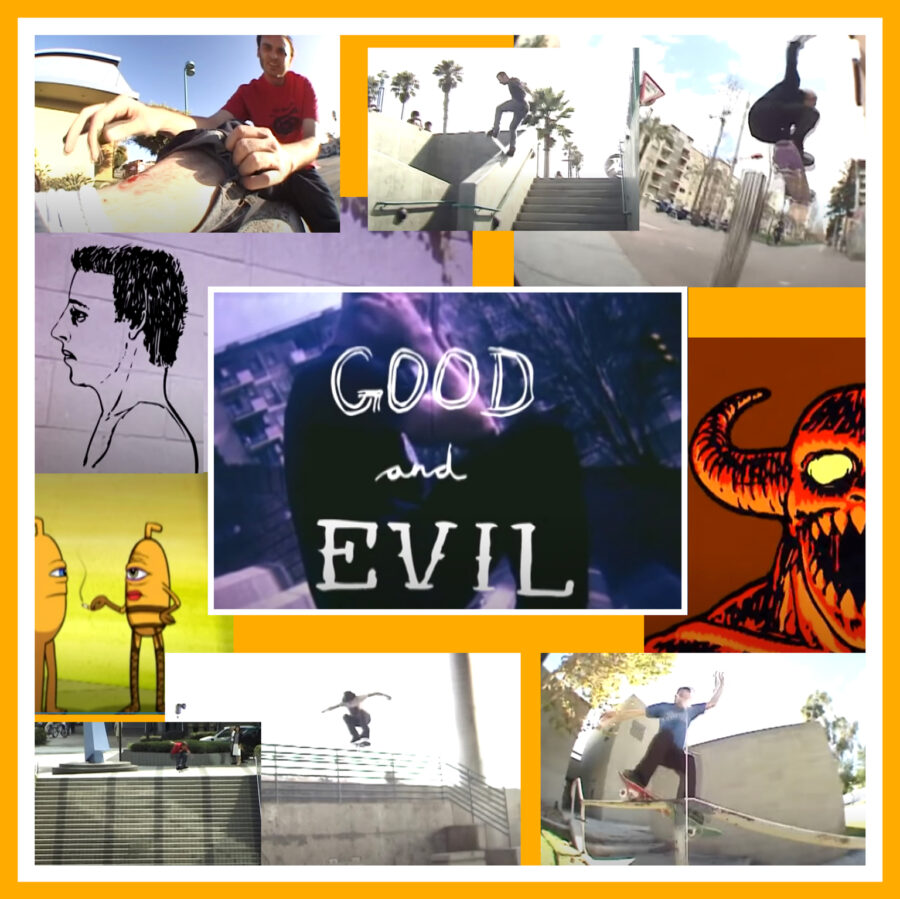
You’re a Toy Machine guy anyway but how into the company were you when Good & Evil popped up?
I’d have said Welcome To Hell because that’s a video where, as I got older, I realised it shaped the way we film video parts. But I’ve talked about it so much, I figured I’d pick Good & Evil [laughs].
I started skating in 2003 – maybe ’02 – but Good & Evil came out whilst I was in high school and people were talking about it. Austin Stephens had a part in This Is Skateboarding but in Good & Evil he was doing pole jams, skating cool stuff and I remember thinking, “This dude is really different.” Ed Templeton has the first part and he’s still killing it, it’s Johnny Layton’s debut, and with the music too – all those things combined were so good.
It’s weird. In high school I feel like I liked everything. I was watching Girl and Zero videos, I loved Baker 3 and that came out a little after Good & Evil. Spanky and Bryan Herman went pro from that. It was a magical time where all these companies put out sick videos.
Good & Evil would have Toy Machine’s first video after you started skating so did you go through them backwards from here?
The way it happened was: I skated with this guy who was older than me, he gave me Misled Youth, some 411s and I think I saw Welcome To Hell before Good & Evil but I didn’t make the connection. Being in high school and impressionable, something about Good & Evil and the music clicked at that point.
Actually, a video where I was, like, “Whoa, every song in this is really good” was That’s Life. So Foundation and Toy Machine both dropped videos in the same year. iPods barely existed but I remember thinking, “What’s this song Daniel Shimizu skates to?” So Gang Of Four had the first song in a skate video where I thought it was the best thing I’d ever heard.
I played it a million times and, back then, you could write the name of the song yourself in iTunes. But I didn’t write ‘Gang Of Four – Damaged Goods’. If I wanted to listen to that song in 2004, on my playlist it’d say ‘Daniel Shimizu – That’s Life’ [laughs]. Patti Smith, Gang Of Four, Dinosaur Jr. – there’s a lot of good music across That’s Life and Good & Evil.
“I remember people talking about “this pro skateboarder, who’s also an artist and he does his own graphics and has his own company” being from the same area.”
That’s great. It’s funny Gang of Four came up here because you and I first met, years ago, in Leeds which is where they got together. Anyway, growing up in Huntington Beach, was the Templeton connection part of why you were drawn to Toy Machine or did that come after the fact?
See, when I was going to the skatepark, I lived in Santa Ana, a city close to Huntington. When I got older, all my friends skated in Huntington so I kind of claimed it because people knew where Huntington was. As a kid, I remember people talking about “this pro skateboarder, who’s also an artist and he does his own graphics and has his own company” being from the same area. That is probably why I liked Templeton and Toy Machine.
How often do you watch Good & Evil these days?
Not much. Some stuff is more nostalgic. If I watched it today, I’d probably just watch Templeton’s part. That sounds harsh but as a kid I’d play the whole video.
Johnny Layton has the standout part for me. I like his burly gracefulness and that it’s basically one half lines, one half handrails. It’s not like he’s just flying down rail after rail either, his trick selection is pretty varied. I see some echoes of this whole part in some of your earlier output too, particularly Cold War.
Of J-Lay? Wow. He does a line with a nollie crook on a bench and I learned that trick because of him. It’s cool you thought that, I’ve never heard someone say it.
In the Cold War I did a line in there with a flatland nollie flip and then noseblunt a picnic table down some stairs. Ed lipslid a table down those stairs in an old video part and I also skated this white out-rail Brian Anderson and Ed had skated. I was doing those things on purpose so even back then I was trying to pay homage [laughs].
Heat – Michael Mann (1995)
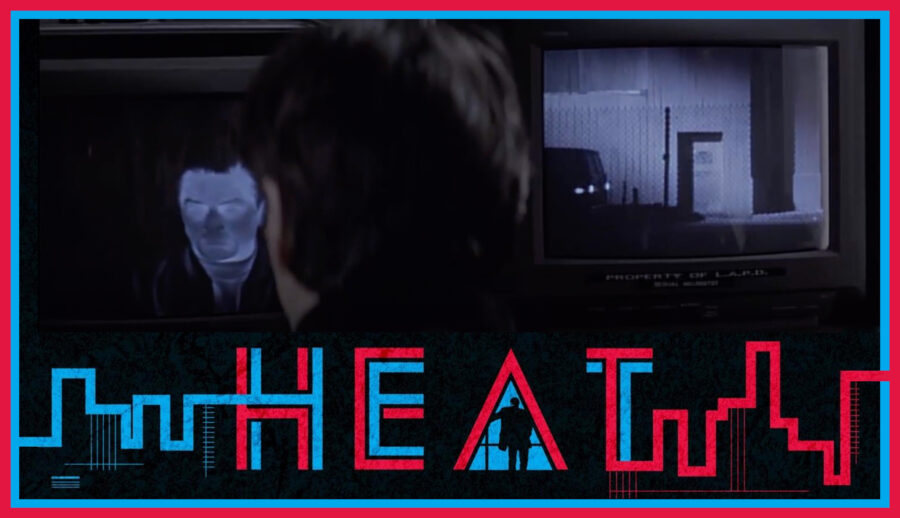
“It’s those details, you know? Putting out video parts, I care to a level like that.”
I expected you to pick a John Carpenter film for this. Although, Carpenter often falls into cult film territory and you could say that Heat borders on that. It’s kind of ‘the one’ for Micheal Mann.
I felt it was too easy to go with Carpenter. I haven’t seen all of Michael Mann’s movies, but the ones I have, I love ‘em. In the ‘80s, especially, when he’d use Tangerine Dream to score [Thief and The Keep]. I’m into when directors regularly collaborate with a band or musician. John Carpenter does that too, with Alan Howarth, they’ve done so many movies together.
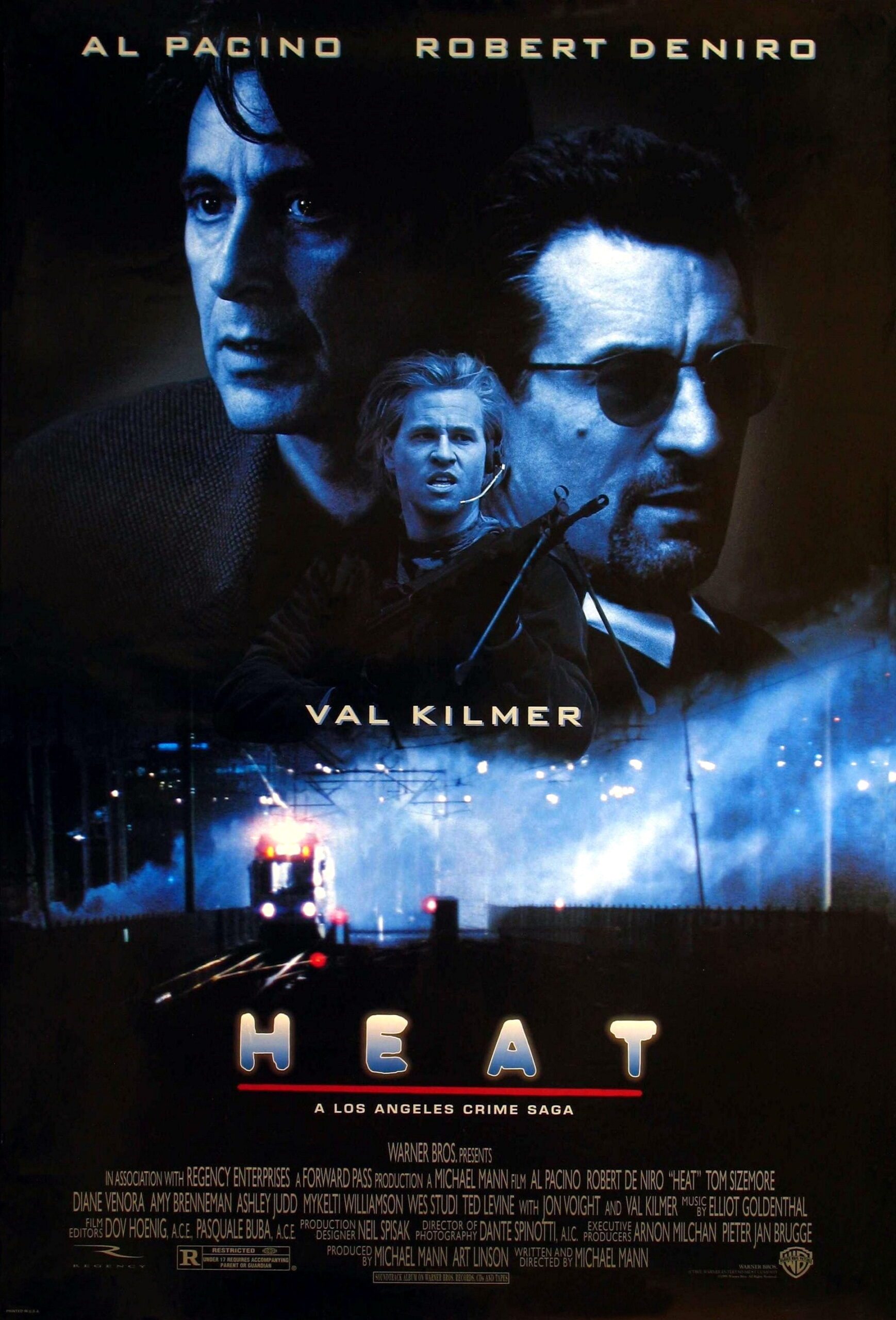 So in summary… Al Pacino plays Vincent Hanna, a detective trying to catch Robert De Niro’s career thief, Neil McCauley and the whole game of cat and mouse is underwritten by a mutual respect between these guys who are, essentially, two sides of the same coin. Why’s this film important to you?
So in summary… Al Pacino plays Vincent Hanna, a detective trying to catch Robert De Niro’s career thief, Neil McCauley and the whole game of cat and mouse is underwritten by a mutual respect between these guys who are, essentially, two sides of the same coin. Why’s this film important to you?
I live and skate in L.A. and in the last five years, driving at night a lot, the depiction in Heat is spot on. It’s dark, mysterious, and he shows that vibe so well. As a skater, it’s not like you fully relate to criminals, but there are times, skating a spot, and it feels like you’re in this movie.
I like that aspect of it, and that he uses real locations which are right next to each other so everything feels like it could really happen.
He had Pacino, De Niro, Tom Sizemore and Val Kilmer take shooting classes so they could realistically shoot and load guns. Every detail Michael Mann puts into his movies, hopefully I take a little bit of that – in some way – and try to put it into video parts.
I’m pretty sure he had DeNiro and Val Kilmer go into a bank and scope it out, thinking the entire time about what it would be like to rob the place.
Yeah, he had them case a bank, he drove around L.A. responding to calls with a cop, his research and attention to detail is a cut above. I love that you chose Heat because from scouting movie locations for spots to destroying skate stoppers with fire-crackers, there’s almost a heist-like amount of preparation that goes into your skating at times [laughs].
I swear I watch this movie once a year and it’s similar to when you listen to music you haven’t listened to in a little bit, then you get back into it and have a huge phase. This damn movie does that. Heat triggers me to watch Thief, the movie he made with James Caan and whenever these come around, then it becomes, like, “Now I’ve got to watch Die Hard” and do all of those.
I didn’t expect the settings to be so closely located, as you mentioned, because I get this sense of vastness from it. It’s still immersive but feels more like L.A. is this never ending sprawl.
There’s a scene [near the beginning of the film] when the criminals drive a truck into an armoured vehicle and that’s by the Staples Centre. Then they take an ambulance and blow it up and that’s just a couple of blocks away. Also, when [spoiler removed: unspecified event happens to unspecified character] in a hotel, and Pacino and DeNiro chase each other through an airfield, that hotel is right next to LAX. All these things really are next to each other.
Instead of using fake gunshots in the bank robbery scene, they’re real. After hearing an example from his sound engineer, Michael Mann, was like: “Nah, this isn’t going to work.” They shot with real blanks and because it’s downtown L.A., between all these buildings, the echo created would go on for a long time. Every time a gun is fired is what it would really sound like.
It’s those details, you know? Putting out video parts, I care to a level like that. My friend, Matt [Bublitz] – who I film with mostly, we work together and I want everything to be how he and I imagine it. All this stuff ties in together.
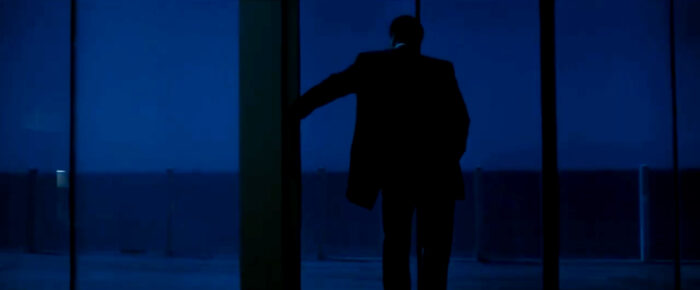
“When you’re driving to downtown L.A. at night, you feel like you’re in the movie in a way that’s magical.”
The scene where Pacino and DeNiro come face to face in a diner is one the most acclaimed moments in cinema. But what’s the standout for you, personally?
 I actually found that diner in real life [laughs].
I actually found that diner in real life [laughs].
There’s a scene where De Niro puts his gun on a table and looks out of his apartment, over the ocean. If you showed somebody that one still, they’d be like, “Oh, that’s Heat.” It’s based on a famous painting by Alex Colville.
Your introduction in Enter The Museum reminded me of that moment too.
Oh, really? I was watching David Lynch stuff when we were building all that. Matt filtered everything through TVs, and I felt there was something of a Twin Peaks vibe.
It’s cool you got a little bit of Heat from that but I was more thinking, like, “Okay, Mulholland Drive meets Twin Peaks. My curtains in the museum are green, David Lynch uses red curtains…” That’s where we were going.
Mulholland Drive is another film that’s good for vicariously soaking up L.A..
Yeah, Mulholland Drive is like a darker side of L.A., you know? Heat is dark too but it’s different. One lives in fantasy and when you’re driving to downtown L.A. at night, you feel like you’re in the movie in a way that’s magical whereas Mulholland Drive is darker.
Before we move on, you visited a location where one of the film’s smaller heists takes place a little while ago, right? Did you come across any spots?
Yeah, I found that area. Some of it’s gone but I was like, “Holy shit, it’s still here.”
That scene stands out. It didn’t go down exactly like that in real life, but all this stuff is based on things that happened, which is pretty crazy. They’re changed up a lot but the real-life McCauley, noticed something going wrong, just a feeling, and dropped everything and left in the middle of a robbery.
The whole movie is based on two real people. So many little things connect everything.
What The Songs Look Like – Frank Olinsky & The Talking Heads (1987)
Lyrics by David Byrne and Jerry Harrison (1979), photograph: ‘Arches’ by James Casebere (1985), book design by Frank Olinsky (1987), self portraits and collage by Tom K (2021)
Granted that What The Songs Look Like was printed in the late-‘80s but it took me a while to track it down. How’d you end up with this book?
One Christmas, my friend Matt Payne was like, “I’ve had this book for a long time. I know you’re a Talking Heads fan and I feel like you’d appreciate it.” So he just gave it to me.
Do you pick up a lot of literature by or about musicians you’re into?
Yeah. If somebody I already like writes something, or puts their stamp on it, it’s more interesting to me than most other things.
Does that give you a new lens to see their work through or is it more about delving into them, as a person?
I guess both.
For the song ‘Heaven’, it’s just a photo and in the old Christopher Reeve Superman movie, I swear this is what Krypton looks like. There’s also the movie Philadelphia, with Tom Hanks, and Q Lazarus who sang ‘Goodbye Horses’ does a cover of ‘Heaven’ so I always really tripped out on this page.
After looking at this photo, I’m sure I later went and searched “christopher reeve superman” on Google, which reminded me of ‘Heaven’ – so I looked it up on YouTube and found her cover of it.
She doesn’t have many songs, and it’s the sickest cover, so this book helped me learn more about a song I already liked even more than the author could have thought it would.
In the book’s preface, David Byrne writes about how casually people listen to music whilst making artwork which inspired him to try writing lyrics whilst watching television – albeit unsuccessfully. Music is intrinsic to skateboarding and maybe there’s a parallel between creating a work of art directly inspired by a song – like this book showcases – and working on a video part, with a song in mind, guiding how you’re putting it together. I’ve gotten motivated that way before.
Definitely. I don’t know if I’ve had it as deeply as what you’re describing but if I’m making a part, I want the vibe to be correct, and the song plays into that. The lyrics don’t always inform that for me, it’s the vibe overall. I’d be more inspired by a movie I’d want a video part to feel like or the aesthetic to mirror.
I know what you’re saying though. There’s a WKND video, Who’s To Say, and Taylor Caruso skates to The Shangri-La’s ‘Out In The Streets’. Right there, there’s a big connection between the skating, the music, the vibe and Taylor.
The lyrics are, like: “Out in the streets, he don’t comb his hair like he did before. And he don’t wear those dirty black boots no more.” It feels like the song is talking directly about Taylor. That’s a moment where I think, “Damn, this song goes so well with him.”
American Utopia (2018) / David Byrne’s American Utopia (dir. Spike Lee, 2020)
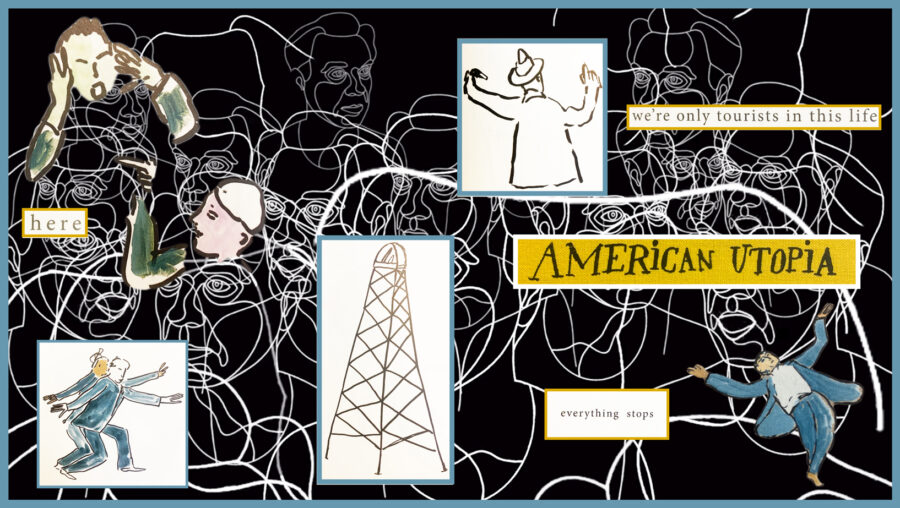
Original artwork by Doug Henders and Maria Kalman from her illustrated ‘American Utopia’ book (2020), collage by Tom K
David Byrne was, like, 30 doing Stop Making Sense, creating something, and at 70 he’s still doing it. It feels and looks different but it’s still so very him.
American Utopia was David Byrne’s first solo album in 14 years, followed up by a tour and then a broadway show which became a concert film directed by Spike Lee. At what point did you learn about it?
I heard it when it first came out, then I saw it performed live. It was insane. The standout song is ‘Everybody’s Coming To My House’ and there was just something about the lyrics and vibe of that song, in that album, while everything going on in America was bad. Then David Byrne came out with this website, Reasons To Be Cheerful.
He was doing so much around that time period and he did a good job of keeping the album going, in a way. He’s always been into world music, so he had musicians from all over the world play with him live. But this song is really powerful. When he sings, “We’re only tourists in this life, we’re only tourists but the view is nice. And we’re never gonna go back home” – that’s pretty heavy. And true.
It’s hard not to think of Stop Making Sense when watching American Utopia. Do you return to that regularly too?
Yeah, fully. There’s a comparison between Stop Making Sense and American Utopia but they’re both individual.
David Byrne wears all khaki in Stop Making Sense and wears all grey in American Utopia.
I feel he’s super into creating a vibe, sticking with it and hopefully people who like him catch on. Maybe there’s a lesson here with video parts: that if you do your own thing, don’t half ass it and put everything into all the details, maybe that resonates with people who get it.
Because Stop Making Sense is such a seminal piece of work, it would be easy for it to overshadow American Utopia. But for me, that lingering connection makes it more impressive. It’s similar territory but David Byrne is so invigorated. His stage presence feels at odds with his age.
There’s something there too. Earlier on, you said I skated a certain way in Cold War. Years later, I’m still skating and filming but it’s a little different. There are parallels there but as a musician or artist you have to change but continually do your own thing. David Byrne was, like, 30 doing Stop Making Sense, creating something, and at 70 he’s still doing it. It feels and looks different but it’s still so very him.
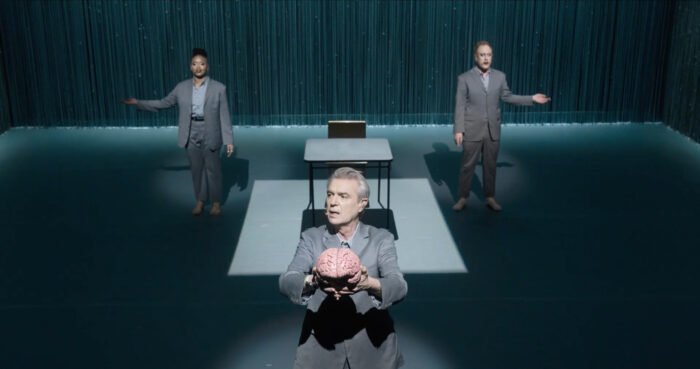
David Byrne’s American Utopia On Broadway (Spike Lee, 2020)
I enjoy watching them both way more than listening because the physicality of the performances is a big part of it for me. Do you have a preference?
Oh, yeah. I’d rather watch them but I can and have listened to both albums as just records of a live performance.
Actually, maybe that’s parallel to skateboarding. In that it’s like hearing a song you love because of a video part, but separate from watching that video part, whereas watching the performance is like watching that video part…
I agree. Maybe I’m wrong but Stop Making Sense, the order of it and the way they perform those songs, it’s one of the best albums they’ve put out. Some of those songs are better live than on the produced record.
American Utopia is interesting in that way because of what becomes of certain songs in each medium. ‘I Dance Like This’ can be straining to listen to but it’s translated wonderfully for the stage version.
It’s similar with ‘Here’. Watching it live, he’s holding a fake brain and pointing to regions of the brain. Whenever I hear it, driving in my car or whatever, I picture him holding that brain and talking to it [laughs].
The main connection between these things, it all comes back to a vibe. That’s so important. There’s a lot of skating and videos which don’t have a vibe so anyone who puts effort into keeping a vibe, that’s really special.
Atmosphere is our through line here.
It’s about atmosphere and creating that takes a lot of hard work, you know? It’s pretty powerful: the things you choose not to skate or the song you choose not to use, sticking to the same filmers. Things which maybe not a lot of people don’t realise, but make the end product this thing that’s special. It’s all about the atmosphere, I guess, and how it makes you feel when you watch it.
In the Spike Lee film, David touches on racial injustice and voting; issues which were very much at the forefront of consciousness of last year. There’s also a lot of optimism and warmth to his character throughout which, overall, allows him to craft something that’s thought provoking in an elegant way. Did you have a takeaway in that regard?
I followed him heavily throughout the lead up to the album and the broadway show and it was important for him to do that – encouraging people to vote. [Outside of that] he also discusses riding his bike and climate change. It’s pretty badass that an artist, like himself, can talk about these issues because a lot of people are scared to. It came out during a dark time but, yeah, I felt uplifted by it.
Previous ‘Offerings’: Bobby Puleo, Ray Barbee, Zach Riley, Ryan Lay, Casper Brooker
Also by Farran Golding: Justin Henry, Jonathan Mehring on Jake Johnson, Tom Knox, Mason Silva, Rowan Zorilla, Ben Colen on Gino Iannucci, Andrew Allen, Bobshirt’s Tim Anderson, Mark Suciu


